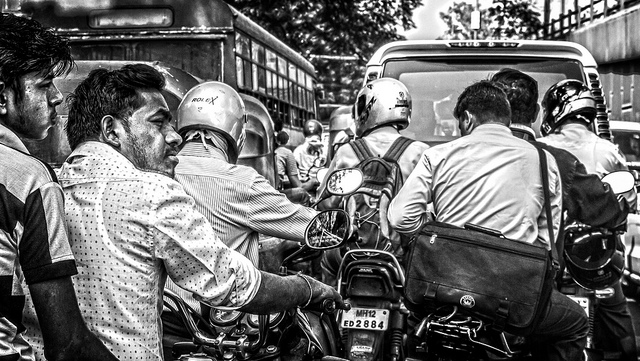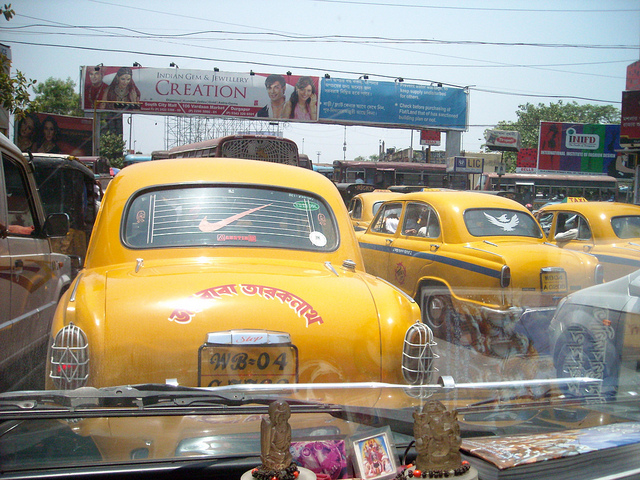India Today – How the Subcontinent Has Changed in the Last 20 Years
I can still remember when I was old, going to India with my family. That was in 1997. That was so forced. I would have preferred to stay in Switzerland, or even better in Germany. A 15 year old from Europe certainly has other things on his mind than dealing with noise, dirt, heat, poverty, traffic jams, corruption and cows.
When you’re 15, you try to find a girlfriend in Germany or Switzerland, have fun with friends, explore the nightlife, and possibly get a good education.
Learn, learn, learn
In India, however, there is only one thing for young people to do – learn, learn, learn. Side jobs, as we know them from Germany, do not exist in India. And if so, it’s not worth it, because only the poorest of the poorest take such jobs, and here you can’t keep up with your demands. Not only that, but it’s pretty frowned upon if you’re middle class or upper middle class and have side jobs. That is, not a bit of work experience until the end of the study…. (by the way, this has not really changed until today).
For someone like me, who at 15 was not really interested in learning, but rather in gaming (at that time Allied General, the Monkey Island series (at that time the game was already a classic), etc.), sports (basketball, snakeboard, etc.).
In India, there was almost nothing at that time (in 1997). Not even cars really existed. Just those Ambassador cars that were uncomfortable and unventilated.
At that time, India was still very much isolated from the world. One could not speak of a free market economy.
For example, “Chucks” were inn at that time, not even this type of shoes it was possible to procure, not even in the big cities!
You couldn’t get the latest game consoles either.
Due to the very bad roads you can forget things like roller skate, skateboard, etc..
Heat, heat, heat
The so-called AC’s (English abbreviation for Air Conditioner) were also not yet available in 1997. There were no air conditioners in cars either!
There was hardly any room on the bus and everyone was practically on top of each other.
The heat was almost unbearable.
Study places hard to get
In 1997, there were very few universities. For example, if you wanted to study IT engineering, you had to travel several hundred miles from home.
And these places of study were far from being paradises. Many places, such as Coimbatore, have hardly any water, are even hotter than average India, and the living quarters are more reminiscent of pigsties than student housing. Whereby I can imagine that even a pigsty in Germany may have been more spacious and comfortable.
All this is compounded by the high level of competition. It seemed that all Indian children were studying 24 hours a day, seven days a week. If they were not in school, then they were in some “Tution Centers” where you got tutoring.
The competitive pressure is very high. At the same time, there were few good jobs in India. This means for a young person that even if he is good to very good, has almost no chance at such a job. Only the crème de la crème has a hint of a chance. A spoiled 15 year old, who has no desire to learn, can’t keep up with that.
Bad outlook for almost everyone
To briefly summarize. Only learning, no “fun activities”, incredible heat, poor infrastructure, no prospects, no sports activities (is frowned upon by Indians, the Olympics results speak volumes) and also no opportunities to really make purchases (like computers, game consoles, etc.). A horror for anyone who comes from wealthy Europe, where you have everything. (The situation was also bad for Indians, which is why so many emigrated to Germany and other countries. In the United Arab Emirates, there are more Indians than natives).
Corruption, fraud, insecurity
On top of all this, almost all “officials”, employees and others wanted to be “bribed”. Nothing goes without a payment. Not even a school registration was possible at that time without a bribe.
At the same time, uninformed Europeans (Non Resident Indians, in this case) were a sitting duck for the locals, who already knew all the tricks. After all, the locals didn’t have jobs or anything, so they focused on doing things that maybe weren’t quite right. Such as the “gutting” of foreign oxen.
What has changed since 1997
Somehow, with the help of good acquaintances from Germany, I managed to get back to the Federal Republic. That was in 2002. A big thank you to all who helped me at that time. It should also be noted here that these people were Germans. Here, too, one noticed that Germans have a strong “compassion” for others. Some Indians lack this completely. Once you slip or get into trouble, no one in India will help you. (Surely this is also a “reflex”, since one does not get possibly, by the assistance attempt, even into the same situation. Strangely enough, this “reflex” of not helping is also found among people from wealthy classes).
After 2002, of course, I went to India every now and then to visit my family. Over the years, India has changed faster and faster.
The first signs were the large IT companies that emerged. Like Tata Consultancy Company or Infosys, for example, each of which always hired tens of thousands of graduates per year.
Then you also noticed that there were more and more goods. For example, the old Ambassador cars were more and more replaced with modern cars from the USA (Ford) and from Japan (Maruti Suzuki, Toyota), or newly acquired.
The infrastructure gradually improved. I was surprised that fiber optic cables for the Internet were laid in our village at that time, not even Germany was that far at that time.
Education improved immensely. Education, for example, has been very heavily privatized. For example, by allowing private citizens to start colleges as well. The number of universities exploded in the period from 2000 to the present. While there were only a few engineering colleges in India at that time, there are already several thousand today.
Online stores like Flipkart and before that others were created. With these, it was possible to order goods online at an early stage. A surprise for India. It was long thought that e-commerce could not work on the subcontinent.
The television opened. Terrible were the times when there were only Indian TV channels and they were grotty at that time. Over time, American and international television programs such as HBO, Fox, etc. were added. Indian channels have also improved over the years.
The icing on the cake came with the emergence of social media. Through Youtube, Facebook, WhatsApp and LinkedIn, lifestyles have become much more like those in the West in recent years. Due to the widespread use of smartphones (India’s smartphone market is now larger than that of the U.S., making it second globally) and the good internet connectivity of these, people have constant access to these social media tools.
Government IT
Another major change is that the Indian government is currently converting all its processes to IT systems. Domestic IT giants such as Tata Consultancy Company (or TCS for short), which has several hundred thousand employees and can handle this Herculean task, are helping.
Examples of this are the Aadhaar Card, a kind of identity card that ensures that people do not appear twice in the data files, or the Goods and Services Tax (GST), which considerably simplifies taxes on goods and services.
Developments in high technology
India has managed to get satellites into orbit around Mars. Only a few countries have managed this so far. As far as I know, China, Russia and the USA are still in this club. The satellite technology is one of the most advanced in the world and can be counted among the top 5.
India is also trying to become a world leader in other areas. For example, India has managed to build its own aircraft carrier. Here, too, there are only a few countries that have managed this so far.
Conclusion
The text should not become infinitely long, then I make the conclusion at this point.
India has definitely improved from the initial horror show.
Things like health insurance and other safeguards are unfortunately not really mature yet. Although it is possible to take out health insurance and other policies on a private basis, the level of security that one would have in Germany has not yet been achieved.
Nevertheless, nowadays you can have a similar standard of living as in Germany. Nevertheless, one thing should not be forgotten. Just because the country has changed a lot in 20 years doesn’t mean that things and the culture in people’s minds have already changed. Many cultural traits still cling to people. The best example is the toilets, although nowadays almost only Western toilets are used, almost no one knows how to use them, not even educated people.
So India has changed a lot. However, I think that as a person from Europe, you will still have great difficulties when you come to the subcontinent. There is still corruption here and there. Poverty has not really been completely eliminated. Here and there you can still find scammers and charlatans. The power goes out willingly and often. Services are, in part, not yet at a European level (IT services, such as software development, excepted).
Pirvat persons from Germany and Europe I would still not advise to go to India in the long term, for that the culture and the conditions are still too different. However, it makes sense to deal with the country. Soon, a large part of the world’s consumers will come from this country (share in the world population is almost 20 percent. At the same time, IT services have become very professionalized and have reached a Western level.
What are your experiences with this South Asian country? I look forward to an exchange.
Images: Flickr.com/ Peter Haden/ Ian D. Keating/
The author: I am Sascha Thattil. I have an IT company in India, I am enthusiastic about Germany, India and I also like to blog about different topics.
Sascha Thattil ist Blogger und Geschäftsführer bei YUHIRO. Wir bauen Entwicklerteams in Indien für Agenturen, IT Dienstleister und Softwareunternehmen auf.


